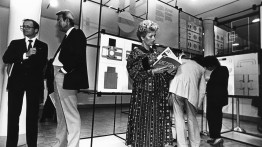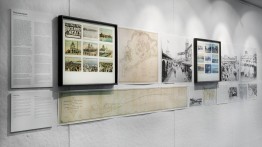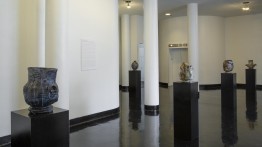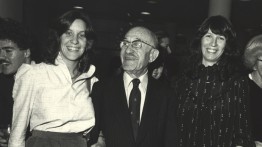Bringing the Architecture Exhibitions Collection Online
POSTED ON: April 25, 2023
Well-dressed men sporting wide ties and long hair admire the sleek lines of Danish-designed products in 1982. A Cooper student examines drawings of Costantino Nivola’s cast-concrete sculptures for a New York City playground. Installation views of a 2002 exhibition of abstract color paintings by Robert Slutzky, a Cooper alumnus, faculty member, and painter who, with Cooper’s first dean of architecture, John Hejduk, helped shape the radical architecture pedagogy of the school with a number of highly influential colleagues. A letter from Hejduk himself to the legendary editor John Entenza, then the director of the Graham Foundation, marking the signing of a contract for the 1971 publication Education of an Architect: A Point of View: “Enclosed are our signatures and although it looks like black ink, it is in fact signed with our blood.”
These are just a few examples of photos, letters, and other ephemera related to over 200 exhibitions organized by the School of Architecture since 1965 that are being processed by the staff of The Irwin S. Chanin School of Architecture Archive more than a year after receiving a grant to digitize and catalog the files. A recent $223,312 matching grant from the Institute of Museum and Library Services (IMLS) launched the project and has allowed the Architecture Archive to work toward making its Exhibitions Collection available to the public on a web-based platform (posters from the collection are currently on view in the Third Floor Hallway Gallery). Additional support from The Cooper Union and the New York State Council on the Arts (NYSCA) has moved the project close to its fundraising goal of nearly $450,000 in project costs, with only $65,000 funds remaining to be raised.
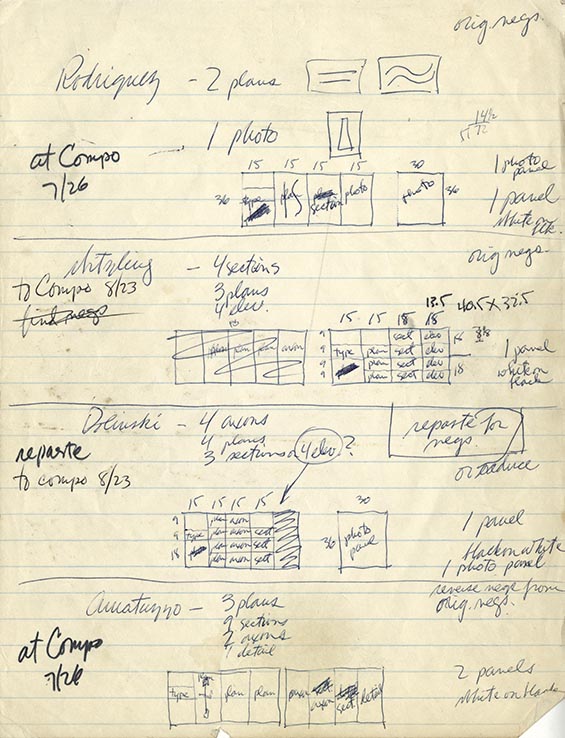
Collectively, these supporters are all essential to creating a digital home for more than five decades of exhibitions that have featured emerging and established architects, designers, photographers, painters, builders, and sculptors, as well as School of Architecture faculty and students. The collection includes documentation of the School of Architecture’s participation in the annual campus-wide End of Year Show, the uniquely Cooper exhibition where the academic spaces, halls, and colonnade of the campus serve as galleries for student work from the disciplines of architecture, art, and engineering. While records from these exhibitions have long been available to local researchers, digitizing them will let scholars from around the world readily access this rich archive of materials.
Statistically speaking, the files of the exhibitions archive are impressive: They include forty-five cubic feet of analog records from 1965 and more than three terabytes of information that originated as digital data starting in 1997. But the significance of the collection really comes into focus when surveying its hundreds of photographs of installations and objects, publication files, correspondence between curators and architects, and letters from the visiting public. Thanks to the grant, Caitlin Biggers, the Architecture Archive’s archivist and project manager for the database effort, has been able to take a deep dive into the extensive exhibitions files, finding a wealth of material documenting the thinking, planning, false starts, and final results that go into every show. Biggers, who has dedicated all of her work at Cooper to making the Archive’s collections more available to the public, had previously analyzed the workflow underpinning the digitization of student work for the Student Work Collection database, the first phase of which took three years to complete. She subsequently published an article in American Archivist (Fall/Winter 2021) about ways to improve data collection while gathering copyright releases. That first project was invaluable in helping Biggers and her colleagues shape their approach to the exhibitions database project.
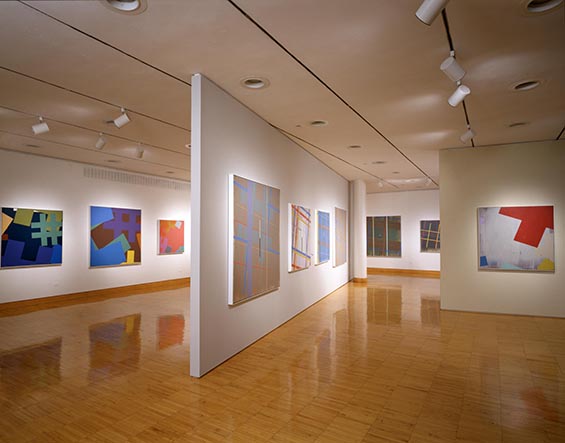
In looking at both projects, she noted “our experience with the student work digital access project put us in a perfect position to get this underrepresented content out to a wider audience. Many museums publish material from blockbuster exhibitions, but rarely do we find exhibition collections offering full digital access to exhibits originally presented on a small scale. Many of the exhibits detailed in this collection were up for just a few weeks, in one gallery or a hallway. This project aims to give those ephemeral presentations a second life.”
Most exhibitions are open to the public, and they also have an important relationship with the School of Architecture’s pedagogy. “Students are a core audience for the exhibitions,” said Steven Hillyer, director of the Architecture Archive, who pointed out that a major goal of the exhibition program has always been to expose them to new voices and methods of design thinking. “Beyond that, the exhibitions also speak to our faculty, individuals from local schools, and the greater architecture and design community in New York.”
Hillyer says that while bringing the exhibition archives online has great merit on its own, it brings exponential value to the online archive of student work. “Once this collection is made available to the public, it will be possible to make a comparative reading between the work produced by Cooper students and the exhibitions the students were exposed to at that time.”
With an average of two major exhibitions per year shown mostly in the Arthur A. Houghton Jr. Gallery or the 41 Cooper Gallery (as well as several smaller installations in the Third Floor Hallway Gallery), these presentations represent one of Cooper Union’s major contributions to New York cultural life, consistently drawing reviews from the architecture and design press. In fact, over the years, The Cooper Union’s exhibitions have shaped and been shaped by pertinent debates in the field including those relevant to design pedagogy. After visiting the seminal exhibition of student work, Education of an Architect: A Point of View, held at the Museum of Modern Art in 1971, the legendary New York Times critic Ada Louise Huxtable wrote, “These remarkable drawings and models by 40 students are the result of a seven‐year‐old program… At a time when basic skills are considered unessential, at Cooper Union they are learning to draw.” Four years ago, when the Architecture Archive mounted an exhibition celebrating thesis projects from the Student Work Collection, Zachary Edelson of Metropolis magazine wrote about the power of the designs shown in the 1971 exhibition as well as the student work of later Cooper alumni like Liz Diller and Stan Allen.
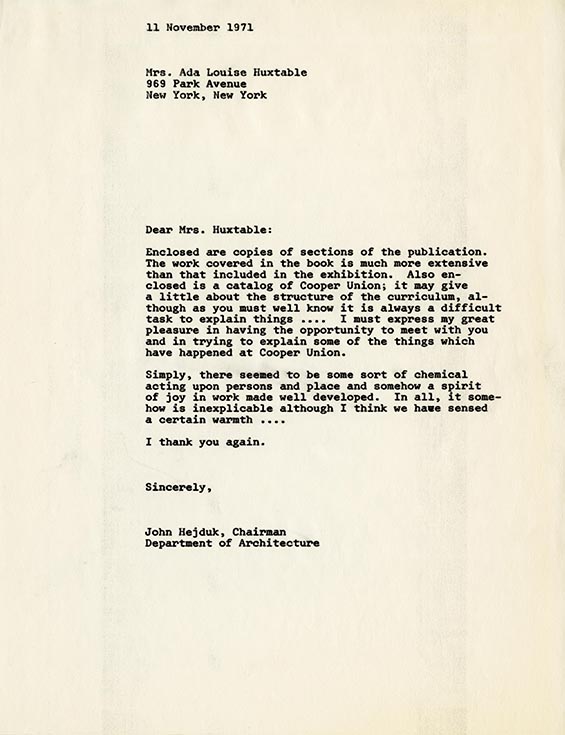
Modern Art, NY. Courtesy of The Irwin S. Chanin School of Architecture Archive.
Many of the exhibitions in the collection have received support from granting organizations over the years. The Graham Foundation for Advanced Studies in the Fine Arts and NYSCA have both funded numerous exhibitions, as has the Silverweed Foundation, a private foundation run by the granddaughters of Irwin S. Chanin.
As the project revisits these storied exhibitions, their content will become available to all through The Cooper Union's website. The last hurdle is to raise $65,000 to complete digital infrastructure for the dedicated online archive.
To learn more about this project and how to support exhibitions at The Cooper Union, please contact Siri Comeau McDonald, director of institutional giving and sponsored projects, at siri.mcdonald@cooper.edu.

